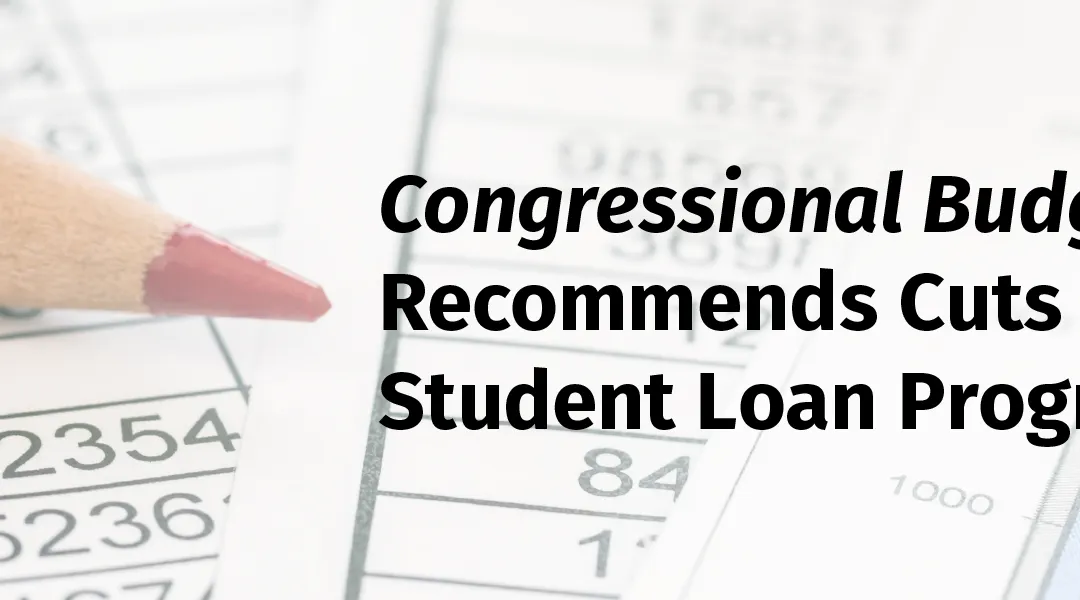A recent report, Options for Reducing the Deficit: 2019 to 2028, released by the Congressional Budget Office (CBO) recommends cuts to the federal student loan program in order to balance the federal budget. The CBO’s recommended options below could potentially take effect July 2019.
Eliminating or Reducing the Add-On to Pell Grants
Pell Grants help low-income students pay for their undergraduate education. The program provided nearly $27 billion in gift aid to over 7 million students last year alone. Unlike student loans, Pell grants do not need to be repaid.
The CBO recommends reducing the maximum award by half for the 2019-2020 academic year.
Limiting Forgiveness of Graduate Student Loans
There are forgiveness options for federal student loans under some conditions. Income-driven repayment (IDR) plans include a forgiveness option after 20 years of consecutive payments. IDR plans have no limit on the amount forgiven, making them very attractive to graduate students who borrow large amounts to earn Master or Doctorate degrees.
The CBO recommends reducing the forgiveness options for borrowers who used federal student loans to attend graduate school. They suggested increasing the payment rate from 10 percent to 15 percent of their income guidelines and extending their repayment period to 25 years before forgiveness takes effect.
Reducing or Eliminating Subsidized Loans for Undergraduate Students
One of the most significant advantages federal student loans have over private loans is subsidized options. Under the Direct Loan Program, students can receive subsidized loans and don’t pay any interest on their student loans while attending school.
The CBO recommends limiting subsidized loans to only students that would qualify for need-based gift aid, or eliminating subsidized loans and allowing students to borrow more in unsubsidized loans. The CBO estimates that it would cost borrowers an average of $3,700 more in interest over a 10-year repayment period.
Reducing or Eliminating Public Service Loan Forgiveness (PSLF)
Student loan borrowers who work as qualified public servants can have applicable loans forgiven after 10 years of consecutive payments under the Public Service Loan Forgiveness program. Those borrowers are not required to pay income tax on the forgiven loans and there is no limit to the amount that can be forgiven.
The CBO recommends limiting the amount of debt that could be forgiven to $57,500 or eliminating the program and allowing borrowers to earn forgiveness through IDR plans.
Removing the Cap on Interest Rates for Student Loans
Another advantage to the federal student loan program is a fixed interest rate with a cap of 8.25 percent for undergraduate students, 9.5 percent for graduate students, and 10.5 percent for parent borrowers.
The CBO recommends removing those caps, resulting in borrowers having to pay higher interest rates if the 10-year Treasury note rate rose higher than 6.2 percent for undergrads and higher than 5.9 percent for grad students and parent borrowers.
What do These Recommendations Mean to You?
The CBO report confirms that student debt is spiraling out of control, for both borrowers and the government. As the second most abundant form of household debt, student loans are impacting the economy and the federal budget. More than ever, borrowers need advocates to help them manage the constantly changing student loan repayment landscape.
IonTuition is here to stay on top of any changes that come about and help employees into the best repayment options available.

